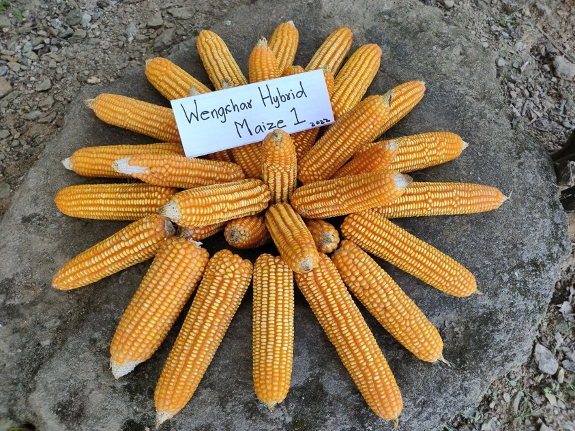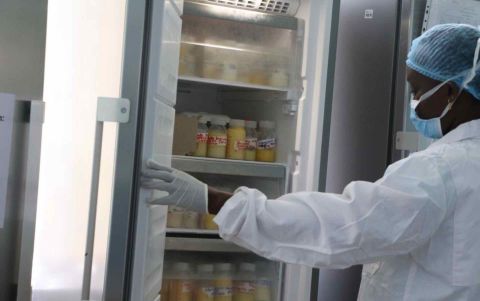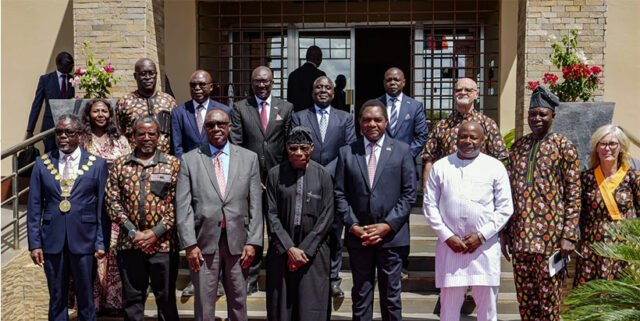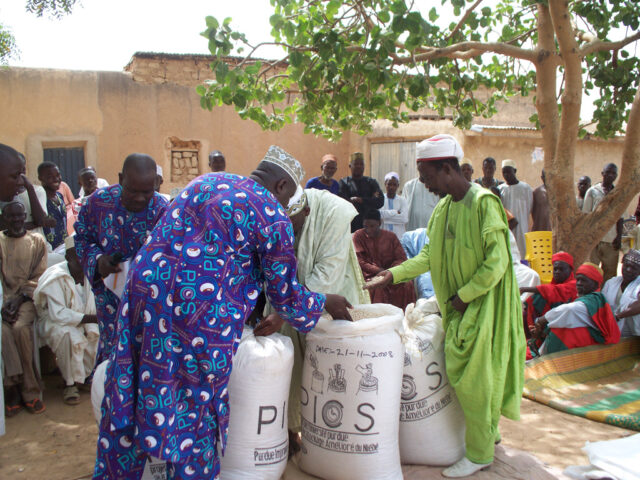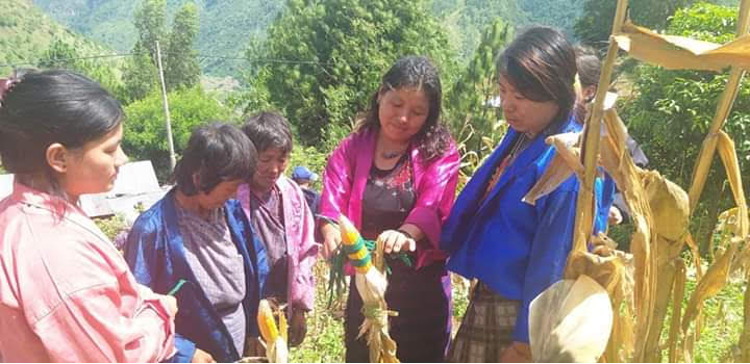
This story is written by P.H. Zaidi of CIMMYT and Passang Wangmo and Tsheltrim Gyeltshen of the National Maize Program, ARDC Wengkhar, Bhutan.
The planting of maize hybrid Wengkhar Hybrid Maize 1 (WHM-1) has helped farmers in the Mongar district of Bhutan double their maize yield.
WHM-1 was developed in partnership with the International Maize and Wheat Improvement Center (CIMMYT) and became the first maize hybrid to be released in Bhutan to combat the negative effect of increasing temperature or extreme heat events on maize.
The hybrid was designed with characteristics of heat and drought tolerance, as well as a resistance to stem and root lodging. It also had additional stay-green traits after cob maturity and produced a high yield.
The success of the implementation in Bhutan is leading to an increased production of WHM-1, which will aim to meet national demand and work towards country’s self-sufficiency.
Dechen Yangden is one of the smallholder beneficiaries in Tsakaling, a sub-district in Mongar in the east of the country, who have boosted their maize yield by planting WHM-1. “My attempt to grow WHM-1 has doubled my maize production compared to last season where I cultivated some other maize varieties (2.5 metric tons (mt) in one hectare (ha)),” she said.
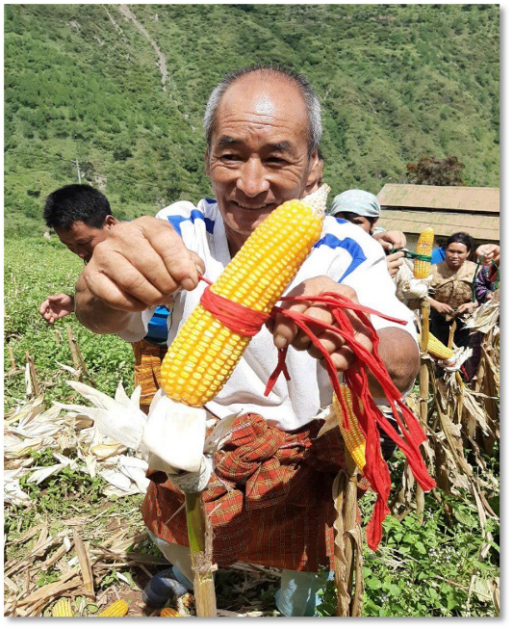
Farmers’ experiences of WHM-1
Since its official release in 2020, the national maize program based at Agriculture Research & Development Center (ARDC) started producing hybrid seeds and maintaining parental lines. To test the success of the ARDC’s work, planting was carried out in the Tsakaling and Waichur hamlets in Mongar districts, covering an area of six acres.
Maize farmers in Tsakaling shared that although the crop was affected by the insect fall armyworm during the early vegetative stage, the productivity of the crop was not affected, as it recovered at later stage.
Meanwhile, ARDSC Khangma carried out yield monitoring during the harvest, where WHM-1 yielded 5.8 mt ha-1, which is noticeable rise on the national average of 3.7 mt ha-1.
Following the conclusion of their harvest, farmers in the two localities shared their views on the newly released maize in order to review the effect of the implementation of WHM-1. Both sets of growers reported an improved performance from the use of WHM-1 and noted that, unlike other maize varieties, the hybrid has shorter and uniform plant height along with a higher resistance to lodging, which is an essential trait given the conditions it is grown in. Furthermore, the stay-green trait of the hybrid after maturity of cobs gave farmers an added advantage of green fodder, which can be used for feeding their cattle.
In Waichur, the growers found that this hybrid had a tight husk and fully filled kernels. They shared similar views to growers in Tsakaling, reporting positive lodging resistance in the hybrid.
Both communities expressed their interest in continuing to use WHM-1, given the availability and accessibility of the seeds. As a response, the National Maize Program at ARDC Wengkhar, is looking to deploy the newly released hybrid on a larger scale, which will ultimately contribute towards enhancing maize self-sufficiency in the country.
WHM-1 was developed through partnership of the National Maize Program at Wengkhar and CIMMYT under the Heat Stress Tolerant Maize for Asia (HTMA) project for germplasm and technical assistance and the Commercial Agriculture and Resilient Livelihoods Enhancement Program (CARLEP-IFAD/MoAF) for on-farm research and intensification.
Feasibility mapping for WHM-1 showed that its adaption stretches along the southern foothills and some parts of eastern district. The National Maize Program, sister research centers, and farmers are currently working on upscaling the seed production for intensification of national maize production to meet the domestic demands.
Cover photo: Women farmers tagging their first choice of maize crop, WHM-1, in Tsakaling hamlet, Mongor, Bhutan. (Photo: ARDC)
